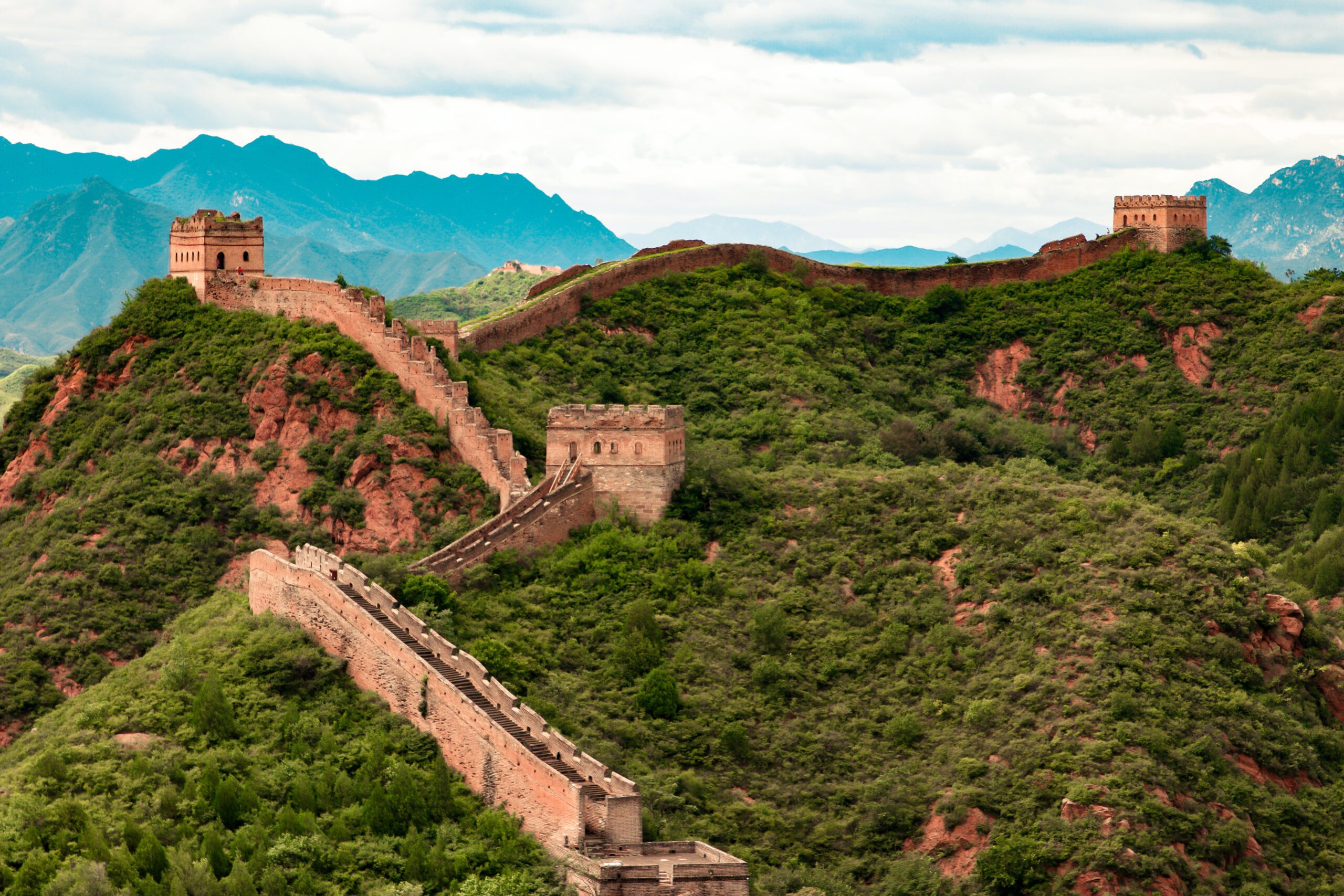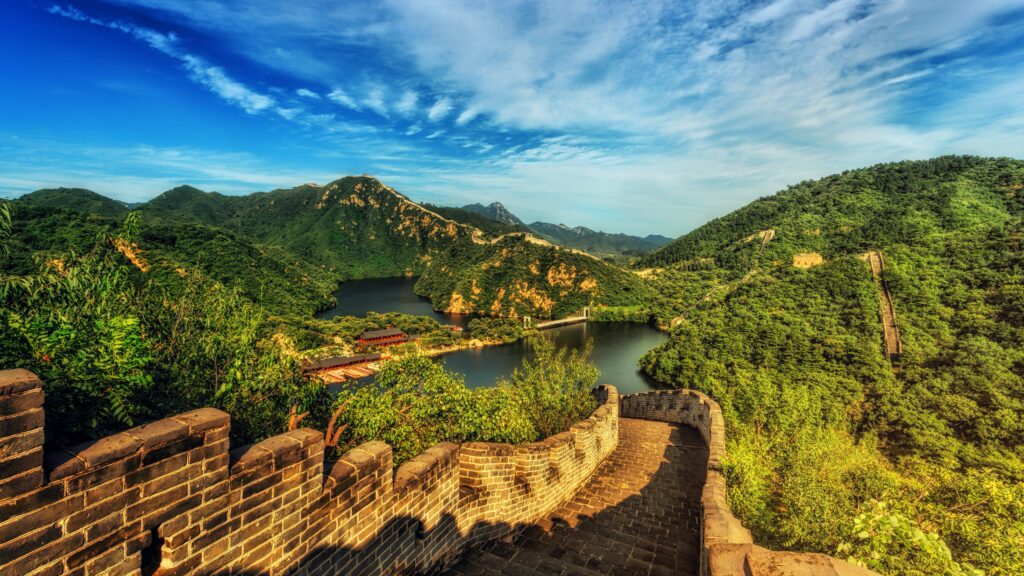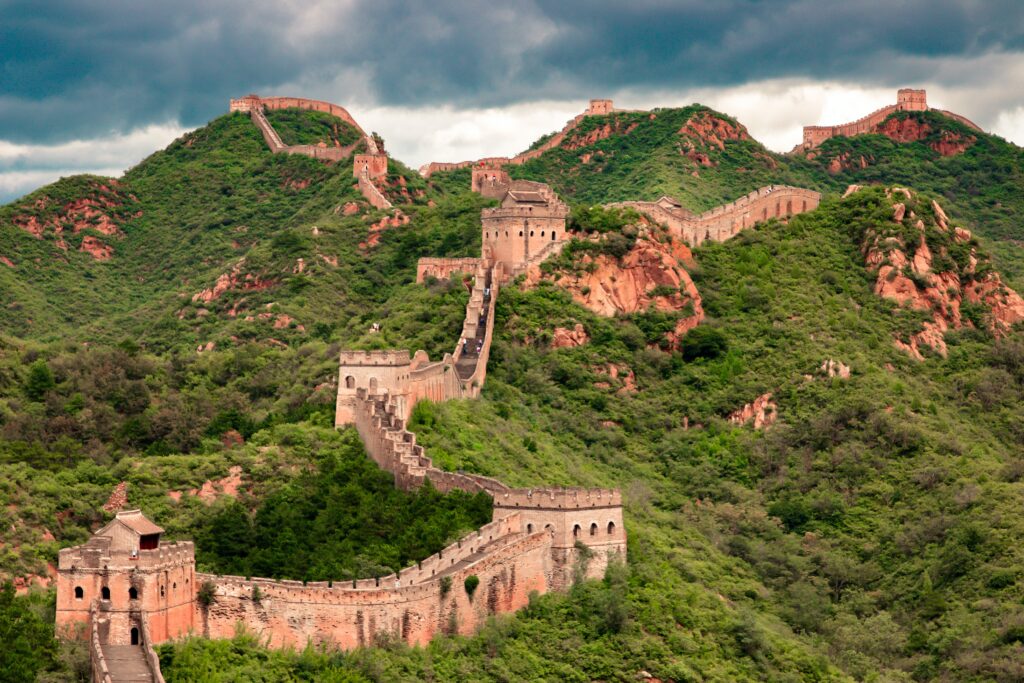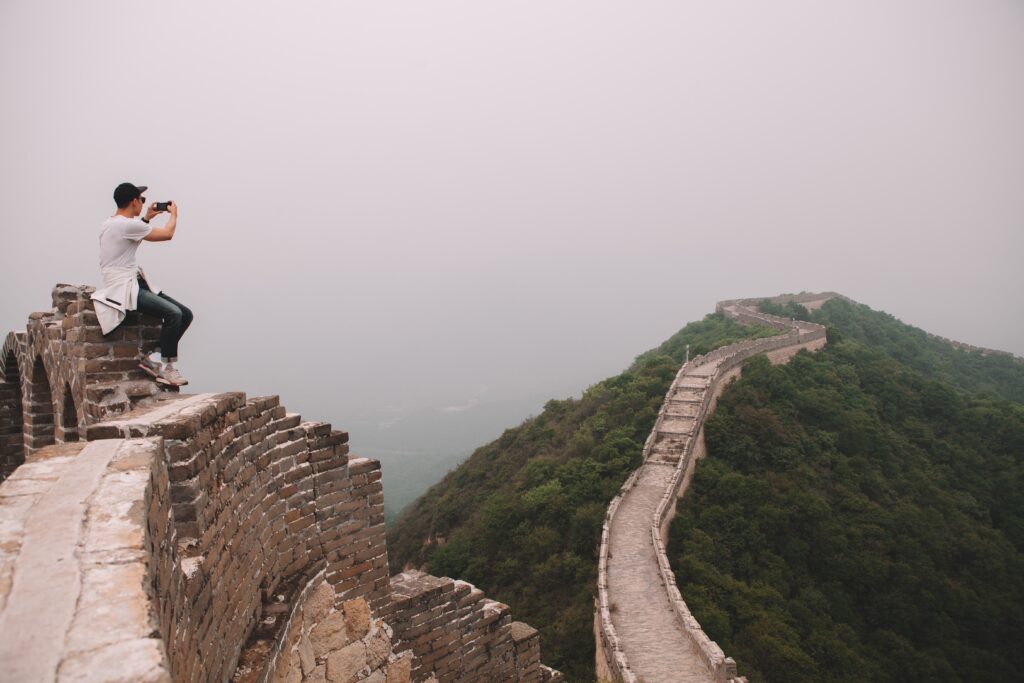Trekking the Great Wall of China: A Journey Through History
Recently updated on January 17, 2025
Total words: 2509

Table Of Content
- The History of the Great Wall of China
- Preparations for Trekking the Great Wall of China
- The Beauty of Trekking the Great Wall of China
- The Challenges of Trekking the Great Wall of China
- Trekking the Great Wall of China: An Unforgettable Adventure
Introduction
Trekking the Great Wall of China is a journey through history like no other. Not only will you get to witness one of the greatest man-made structures the world has ever seen, but you’ll also be able to explore the rich culture and history of China. From the ancient fortresses to the grand scale of the wall itself, the Great Wall of China is an experience you’ll never forget.
The History of the Great Wall of China
The Great Wall of China is one of the most iconic structures in the world, and is steeped in centuries of history and legend. The wall was built over a period of 2,000 years to protect China from invaders and was constructed by many different dynasties. The first sections were built as early as the 7th century BC by the Qin Dynasty, who unified China in 221 BC.
The Ming Dynasty is often credited with most of the wall’s construction. The Ming rulers began building sections of the wall in the 14th century and continued to add to it over the next 200 years. They extended the wall from the Gobi Desert in the west to the Yellow Sea in the east, and it now stretches over 3,000 miles.
The Great Wall of China is an impressive feat of engineering and construction. It is made up of stone, brick, wood and other materials and is 20 to 30 feet wide. In some areas, the wall is as high as 50 feet.
The wall was built to protect China from invaders, but it also served as a trading route. Merchants and traders were able to transport goods along the wall’s pathways without fear of attack. The wall also served as a source of inspiration for the Chinese people, who believed that it was a symbol of strength and resilience.
The wall has been damaged and rebuilt many times over the centuries. During the Cultural Revolution of the 1960s, many sections were destroyed by the Red Guards. In the decades since then, the Chinese government has worked to restore the wall and protect it as a cultural treasure.
Today, the Great Wall of China is a popular tourist destination, attracting millions of visitors each year. Tourists can explore the wall’s winding paths and take in the breathtaking views. It is a journey that will take them back in time and teach them about the history of this remarkable structure.

Preparing for a Trek Along the Great Wall of China
The Great Wall of China is a stunning structure that stretches for thousands of miles across the Chinese countryside. Trekking the Great Wall of China is a once-in-a-lifetime experience that will stay with you forever. But before you start your journey, there are some important preparations that you should make.
Research Your Route
The Great Wall of China is a vast and complex structure. Depending on the section you are trekking, the route may be quite challenging. It is important to research the route you are taking in advance, and to make sure that you have the necessary fitness level and experience to complete the trek. You should also check the weather conditions and the terrain of the route before you begin.
Gather the Appropriate Gear
You will need the right clothing, footwear, and equipment for your trek. Make sure that you have the right clothing to keep you warm and dry in the event of inclement weather, and that your footwear is appropriate for the terrain you will be travelling on. As well, make sure to pack a first-aid kit and any other items you may need such as a water bottle, snacks, and a map.
Plan for Emergencies
No matter how much research and preparation you do, accidents can still happen. It is important to know what to do in an emergency situation. Make sure you know contact information for the nearest hospital and emergency services, and that you are familiar with local language and customs. You should also have a safety plan in place and let someone know where you are going and when you are expected to return.
Trekking the Great Wall of China is an incredible journey, and with the right preparation, you can make sure that your trip is safe and enjoyable.

The Beauty of Trekking the Great Wall of China
Trekking the Great Wall of China is an experience like no other. From its winding paths to its breathtaking views, it has something to offer to everyone. Whether you are an avid hiker or just looking for something different to do, trekking the Great Wall of China is a great way to explore the country’s ancient history and appreciate its natural beauty.
Exploring Chinese History
The Great Wall of China was built over two thousand years ago and is one of the Seven Wonders of the World. It was constructed to protect the Chinese Empire from invaders and is made up of a series of walls, watchtowers, and fortifications that span over 4,000 miles. It is an incredibly significant part of Chinese history and culture, and a trekking trip is the perfect opportunity to explore it.
On a trekking tour, you will get to learn about the history of the wall and how it has changed over time. You will also get to visit some of the most iconic sections of the wall, such as Badaling, Juyongguan, and Simatai. These sections are the best preserved parts of the wall and offer stunning views of the surrounding countryside.
Appreciating the Natural Beauty
The Great Wall of China is not only about its historical significance, but also its natural beauty. As you trek along the wall, you will be surrounded by lush green mountains and breathtaking views. On a clear day, you can even see the wall stretching out as far as the eye can see.
The wall is also home to a variety of wildlife, from colorful birds to endangered species such as the red-crowned crane and the Chinese giant salamander. As you walk along the wall, you will also get to see some of the most spectacular sunrises and sunsets in the world.
The Challenge of the Trek
Trekking the Great Wall of China is no easy feat. The wall is full of steep climbs and long stretches that can be difficult to navigate. It is also a physically demanding trek, so you need to be prepared for the challenge.
However, the challenge is part of what makes trekking the wall so rewarding. The feeling of accomplishment you get when you reach the top is unparalleled. It is a unique experience that will stay with you for life and is sure to be an unforgettable journey.
The Perfect Trip
Trekking the Great Wall of China is a journey that is sure to be an incredible experience. From exploring Chinese history to appreciating the natural beauty and taking on the challenge of the trek, it is the perfect way to experience this incredible country. So, if you are looking for an adventure that is both rewarding and unforgettable, trekking the Great Wall of China is the perfect choice.
The Challenges of Trekking the Great Wall of China
The Great Wall of China is one of the world’s most awe-inspiring and iconic landmarks. It stretches across much of the northern border of China and is an incredible feat of engineering. Trekking the Great Wall of China is an adventure of a lifetime. But it is not without its challenges.
The first challenge of trekking the Great Wall of China is the terrain. The Great Wall is made up of steep hills, uneven steps, and crumbling rock. This can make it difficult to traverse, especially for those who are not used to rugged terrain. It’s important to wear appropriate footwear and to take breaks when needed.
The second challenge is the weather. The Great Wall of China is located in a temperate climate, and trekkers must be prepared for sudden changes in temperature. Low temperatures and rain can make it difficult to traverse the Great Wall, so it’s important to pack weather-appropriate clothing and supplies.
The third challenge is the altitude. The highest point of the Great Wall rises over 3,000 meters above sea level, which can be challenging for trekkers who are not used to high altitudes. It’s important to be aware of the risks associated with high altitude and take precautions to prevent altitude sickness.
Finally, the fourth challenge is the cultural difference. The Great Wall of China is a symbol of Chinese culture, and trekkers must be respectful of the local customs and traditions. This means being aware of local etiquette and following the rules and regulations set by the Chinese government.
Trekking the Great Wall of China is an incredible experience and one that should not be taken lightly. But with the right preparation and the right attitude, it can be an unforgettable journey.

Trekking the Great Wall of China: An Unforgettable Adventure
Exploring the Great Wall of China is an iconic experience that should be on every traveler’s bucket list. Whether you’re looking for a leisurely stroll or an ambitious challenge, the Great Wall offers something for everyone. Taking a trekking tour of the wall is an unforgettable journey through history that will stay with you for a lifetime.
Preparing for the Trek
When planning a trekking trip to the Great Wall, it’s important to make sure you’re adequately prepared. Depending on the length of your journey and the terrain you’ll be covering, you’ll need to bring appropriate clothing and footwear. You’ll also need to pack plenty of water and snacks, as well as any additional supplies you think you’ll need. If you’re joining an organized tour, the tour company should provide you with all the necessary information.
Exploring the Wall
Once you’ve reached the Great Wall, the adventure really begins. The wall is one of the most impressive feats of human engineering and there’s something truly awe-inspiring about walking on the same stones that were laid centuries ago. As you make your way along the wall, you’ll see stunning views of the surrounding countryside and have the chance to explore a wide variety of interesting sites.
Learning About the Wall’s History
The Great Wall is a living piece of history and walking along it gives you the chance to learn about its fascinating history. During your trek, you’ll hear stories about the wall’s construction and the many battles fought along its length. You’ll also learn about the various dynasties that have ruled China throughout the centuries. This knowledge will give you a better understanding of the country and its culture.
Witnessing China’s Natural Beauty
As you trek along the Great Wall, you’ll be surrounded by some of China’s most breathtaking landscapes. The wall traverses mountains, valleys, and forests, giving you the opportunity to witness some of the country’s most stunning scenery. You might even be lucky enough to spot some of China’s famous wildlife, such as the giant panda or the golden snub-nosed monkey.
Meeting New People
One of the best parts of taking a trekking tour of the Great Wall is the chance to meet new people. You’ll meet fellow travelers from all over the world and have the opportunity to share stories and experiences. You might even make some new friends that you’ll keep in touch with long after the tour is over.
A trekking tour of the Great Wall of China is an experience that you’ll never forget. Whether you choose to go alone or join an organized tour, you’ll be sure to create memories that will last a lifetime.
Conclusion
Trekking the Great Wall of China is an amazing journey that you will never forget! From the views to the history, it is a one of a kind adventure that you can’t find anywhere else in the world. From the wall itself, to the nearby villages, you are sure to have a great time. Whether you are an avid hiker or a history buff, the Great Wall of China is sure to give you an amazing experience that you’ll remember for years to come. So what are you waiting for? Pack your bags and start planning your trip to trek the Great Wall of China today!
1. What are the best trekking routes on the Great Wall of China?
There are several popular trekking routes on the Great Wall of China, with sections like Jinshanling, Mutianyu, and Jiankou being among the most picturesque and less crowded. Each route offers unique views and experiences, allowing trekkers to immerse themselves in the history and grandeur of this ancient wonder.
2. What is the best time of year to trek the Great Wall of China?
The best time to trek the Great Wall of China is during the spring (April to May) and autumn (September to October) months when the weather is mild and the landscapes are adorned with vibrant colors. Avoiding the peak summer heat and winter cold will ensure a more comfortable and enjoyable trekking experience.
3. What are some essential tips for trekking the Great Wall of China?
Some essential tips for trekking the Great Wall of China include wearing comfortable and sturdy footwear, carrying sufficient water and snacks, applying sunscreen, and being prepared for varying terrain and weather conditions. It’s also advisable to start early in the morning to avoid crowds and make the most of your trekking adventure.
4. What is the history behind the Great Wall of China?
The Great Wall of China has a rich history dating back over 2,000 years, with construction beginning in the 7th century BC. Initially built as a defensive fortification to protect against invasions, the wall underwent several expansions and renovations under different dynasties, ultimately becoming the iconic structure we see today, symbolizing China’s ancient civilization and architectural prowess.
5. Are there guided trekking tours available for the Great Wall of China?
Yes, there are numerous guided trekking tours available for the Great Wall of China, ranging from day trips to multi-day excursions. These tours often provide knowledgeable guides, transportation, meals, and accommodation options, offering a convenient and informative way to explore the Great Wall while learning about its history and significance.